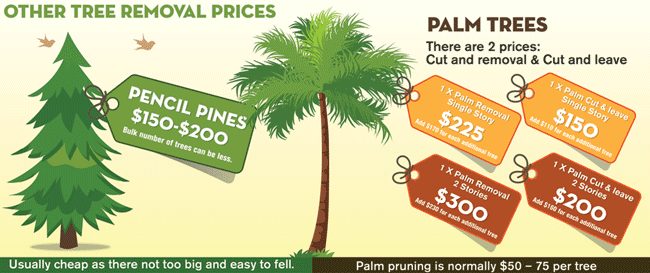Seasonal Tree Monitoring: Approaches For Caring For Trees Prior To And After Their Elimination
Seasonal Tree Monitoring: Approaches For Caring For Trees Prior To And After Their Elimination
Blog Article
Uploaded By-
When it comes to seasonal tree treatment, ensuring appropriate management prior to and after removal can substantially influence the health and aesthetics of your landscape. By recognizing the needed steps associated with evaluating tree health and planning for removal, you can proactively secure your home. Yet what regarding the critical techniques to follow as soon as the tree is gone? Stay tuned to uncover the necessary post-removal treatment measures that will help you cultivate a successful and sustainable environment for your trees.
Pre-Removal Tree Treatment
Before dealing with the elimination of a tree, it's important to focus on pre-removal tree care. Beginning by analyzing the tree's health and structural honesty. Search for indicators of condition, insect problems, or any structural problems that may posture a security risk throughout elimination. It's important to speak with a licensed arborist to identify the best strategy.
Pruning dead or infected branches can protect against additional damage to the tree and guarantee a smoother removal process.
In addition, think about the ecological impact of eliminating the tree. Trees play an essential duty in our ecological community, so growing a new tree in an ideal location can aid counter any loss. Ensure that you have the necessary permits and authorizations for tree removal, especially if the tree is secured by regional regulations.
Seasonal Upkeep Tips
Examining your tree's requirements throughout the year is necessary for its health and wellness and long life. To maintain your trees in top problem, comply with these seasonal upkeep ideas.
In spring, concentrate on trimming to remove dead or broken branches and motivate brand-new growth.
Summer calls for normal watering, particularly throughout droughts, to ensure your tree stays hydrated.
As how to become a arborist , watch out for very early indicators of illness or stress, and think about using mulch to shield the roots during winter months.
In winter season, beware when removing snow from branches to prevent breakage, and continue to monitor your tree's overall wellness.
Bear in mind to adjust your care regular based on the certain needs of your tree varieties and local climate. By remaining alert and proactive throughout the seasons, you can help your trees grow and prosper for several years ahead.
Post-Removal Tree Treatment
To guarantee the wellness of your landscape also after tree elimination, correct post-removal care is crucial. After a tree is eliminated, it's vital to fill up the remaining hole with topsoil and portable it to avoid settling. This will certainly help maintain the integrity of the ground and stop prospective threats in the future.
Take into consideration growing brand-new plants instead of the gotten rid of tree to recover the equilibrium and aesthetics of your landscape. Routinely water the area to promote the growth of new plants and prevent dirt disintegration.
Inspect the bordering trees for any type of indications of condition or anxiety that might have been brought on by the eliminated tree. Keep an eye out for pests that could've been attracted to the previous tree and take safety nets to safeguard the staying vegetation.
If essential, talk to a specialist arborist to assess the impact of the removal on the surrounding trees and identify any kind of extra care needed. By growth property management to these post-removal care actions, you can ensure the ongoing wellness and elegance of your landscape.
Verdict
Finally, positive seasonal tree care is crucial for maintaining the health and wellness and balance of your landscape. By evaluating tree health and wellness, trimming, and talking to an arborist prior to elimination, you can make sure a safe procedure. After removal, filling the hole, growing new greenery, and regular watering will advertise brand-new development and stop disintegration. Keep in mind to inspect surrounding trees for disease and seek further care procedures from an arborist to keep your landscape flourishing.
